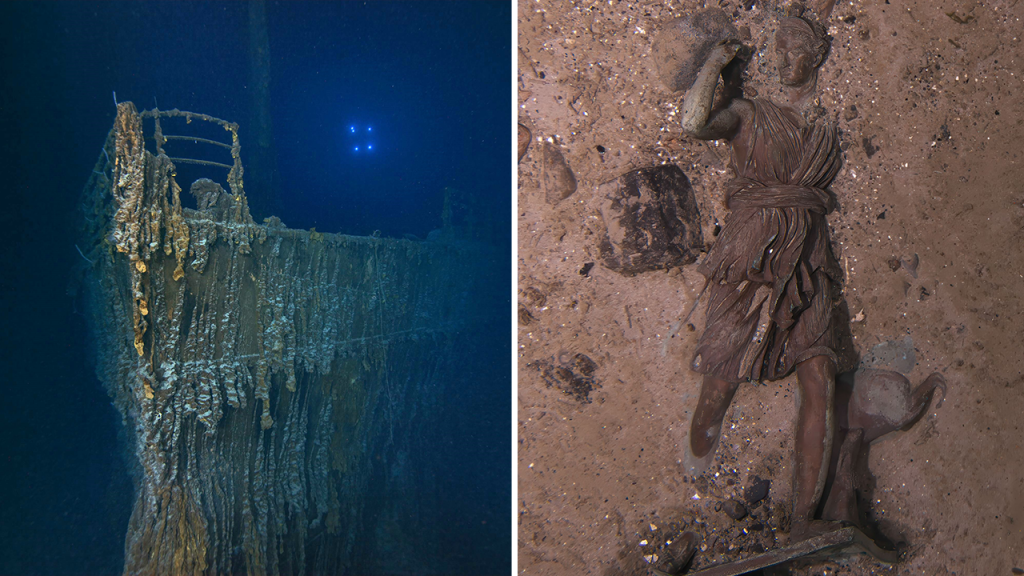Never-before-seen photographs capturing a long-lost statue and the decay of the Titanic shipwreck have been released by the RMS Titanic, Inc. team, known for preserving the legacy of the ocean liner. The team spent 20 days at the wreck site over the summer taking over two million images and videos, resulting in findings that were recently shared. The rediscovery of the statue of the ancient Roman goddess “Diana of Versailles” was a highlight of the expedition. The statue was first found 70 years after the Titanic’s sinking but became lost until it was recently spotted. Additionally, the photos showed the decay of the ship, including a missing 15-foot-long part of a railing on the right side of the vessel.
The bronze statue of Diana of Versailles is 2 feet tall and was displayed as the centerpiece of the First Class Lounge on the RMS Titanic. The statue was rediscovered by the team’s researcher James Penca and data scientists during the summer expedition, marking a significant find that many experts feared was lost forever. Along with this rediscovery, the team also made a somber revelation – a significant section of the railing surrounding the Bow’s forecastle deck had fallen off the portside prow where it had stood until as recently as 2022. The team expressed their sadness at the loss of this iconic piece of the ship’s structure, reaffirming their commitment to preserving the Titanic’s legacy in the face of its inevitable decay.
The photographs taken during the expedition offered a new perspective on the Titanic wreck, revealing details such as the missing section of the ship’s railing and the rediscovered statue of Diana of Versailles. The team’s director of collections, Tomasina Ray, expressed excitement at sharing these remarkable discoveries with the world. Despite the thrill of the find, the team also acknowledged the evidence of decay present on the wreck, particularly the fallen railing, which altered one of the Titanic’s most recognizable and symbolic visuals. These images underscored the urgency of the team’s preservation efforts to document and protect as much of the Titanic’s legacy as possible before it is too late.
The Titanic sank in 1912 after hitting an iceberg, with the ship remaining undiscovered until 1985 in the Atlantic Ocean. The recent discoveries from the RMS Titanic, Inc. team shed new light on the wreck’s condition and the ongoing decay affecting the iconic vessel. The 3D photos taken during the expedition provided detailed insights into the state of the ship, showing the fallen railing on the seafloor and highlighting the changes that have occurred over the years. The images serve as a reminder of the fragility of the Titanic wreck and the importance of continued efforts to preserve and document its historical significance for future generations.
The findings from the summer expedition represent a significant contribution to the ongoing efforts to study and protect the Titanic wreck. The discovery of the statue of Diana of Versailles, along with the documentation of the decaying structure of the ship, offers valuable insights into the preservation challenges faced by the RMS Titanic, Inc. team. Despite the loss of the iconic bow railing and other evidence of decay, the team remains dedicated to their mission of safeguarding the Titanic’s legacy and sharing its story with the world. These new photographs provide a fresh perspective on the Titanic wreck, showcasing both the beauty of its artifacts and the impact of time and environment on its deteriorating structure. Through their work, the team continues to honor the memory of the Titanic and all those who were affected by the tragic events of 1912.


